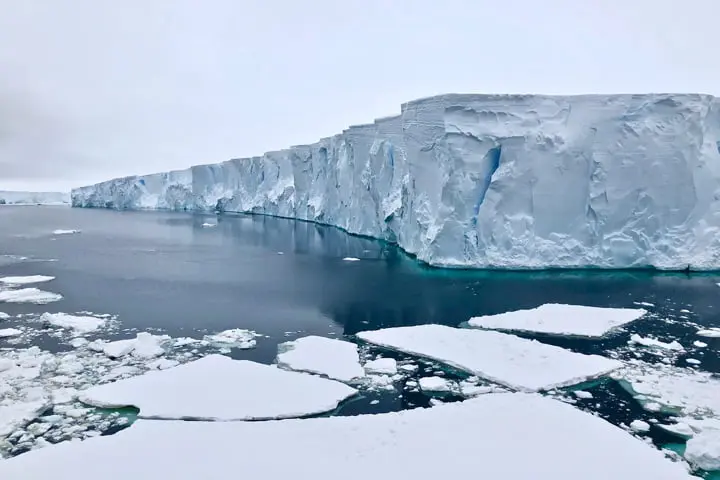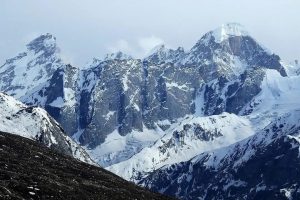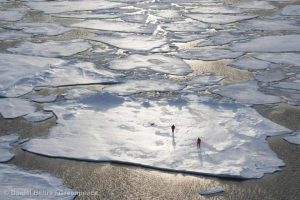Global warming and climate change can’t be just written off since they are bound to have a profound effect on humankind and the planet. Take for example, the recent study that points that the doubtful long-term stability of the huge West Antarctica Thwaites glacier could raise the sea levels across the world by 65 cm as per a report in scitechdaily.com.
The addition of 65 cm in sea levels would effect cataclysmic changes in the coastline since a 20 cm rise from 1900 onwards has forced many of the communities on the coasts to abandon their home and hearth while also causing other problems – loss of habitat, flooding and saltwater contamination.
There is more to worry about this “doomsday glacier” as Thwaites is called since when it goes down it could set a chain reaction in the region and drag nearby glaciers with it. This would mean a rise in sea level by several metres. The reason for this is that the West Antarctica glaciers are prone to Marine Ice Cliff Instability or MICI in which retreating ice bares the increasingly tall and unstable ice cliffs which collapse in oceans.
The rise in sea level by several metres would flood mega cities like Mumbai, Tokyo, Shanghai, Miami and New York while low-lying island countries like the Maldives, Kiribati and Tuvalu would be swallowed up.
With a size which is close to that of Great Britain, Thwaites at present contributes four per cent of the global sea-level and since 2000 this huge glacier has lost more than 1000 billion tonnes of ice which is going up regularly over the last three decades. The flow from this glacier has doubled in the last three decades.
What holds back the Thwaites glacier and makes it flow less quickly, is a floating platform of ice which is called an ice shelf. Scientists have found that the ice shelf is destabilising fast.
According to Oregon State University’s glaciologist, the eastern ice shelf now has cracks criss-crossing its surface, and could collapse within ten years.
Also read: New study shows number of fish rises rapidly in waters where pollution is reduced
Assuming that the ice shelf of Thwaites collapses, it will be the beginning of the glacier’s end. In the absence of the ice shelf, this mighty glacier will release all the ice into the ocean over time.
Ice shelves of glaciers like Thwaites and Pine Island glaciers among others are being watched constantly by the scientists as these among several others are being eroded by rising ocean temperature.
The warm water of the ocean undercuts the floating shelves, melting them from below and thinning the ice and thus weakening them, bringing about fractures and cracks. This phenomenon also pushes the anchoring point where the ice meets the seabed backwards. In the Amundsen Sea since the seabed slopes downward it could eventually lead to a change as the glaciers will lose their footing and rapidly retreat.
Also read: Can big eating Baleen whales clean up the oceans, arrest Climate Change?
The shelves retreating means there will be less to hold back the West Antarctic glaciers, enabling them to increase the sea levels across the planet.
There are some who don’t envisage such a massive collapse. It is suggested by other work that destabilisation of Thwaites ice shelf and glacier may not cause such fearsome results. Chunks of ice and sea ice breaking from the glacier and ice shelf may have a restraining effect on the intact ice shelf, thus stopping the chain reaction and preventing the entire West Antarctic ice sheet from collapsing.
About what will happen in future may be debated and argued, it is certain that as Thwaites’ glacier retreats it will constantly keep adding to the sea levels across the globe for decades to come.




















